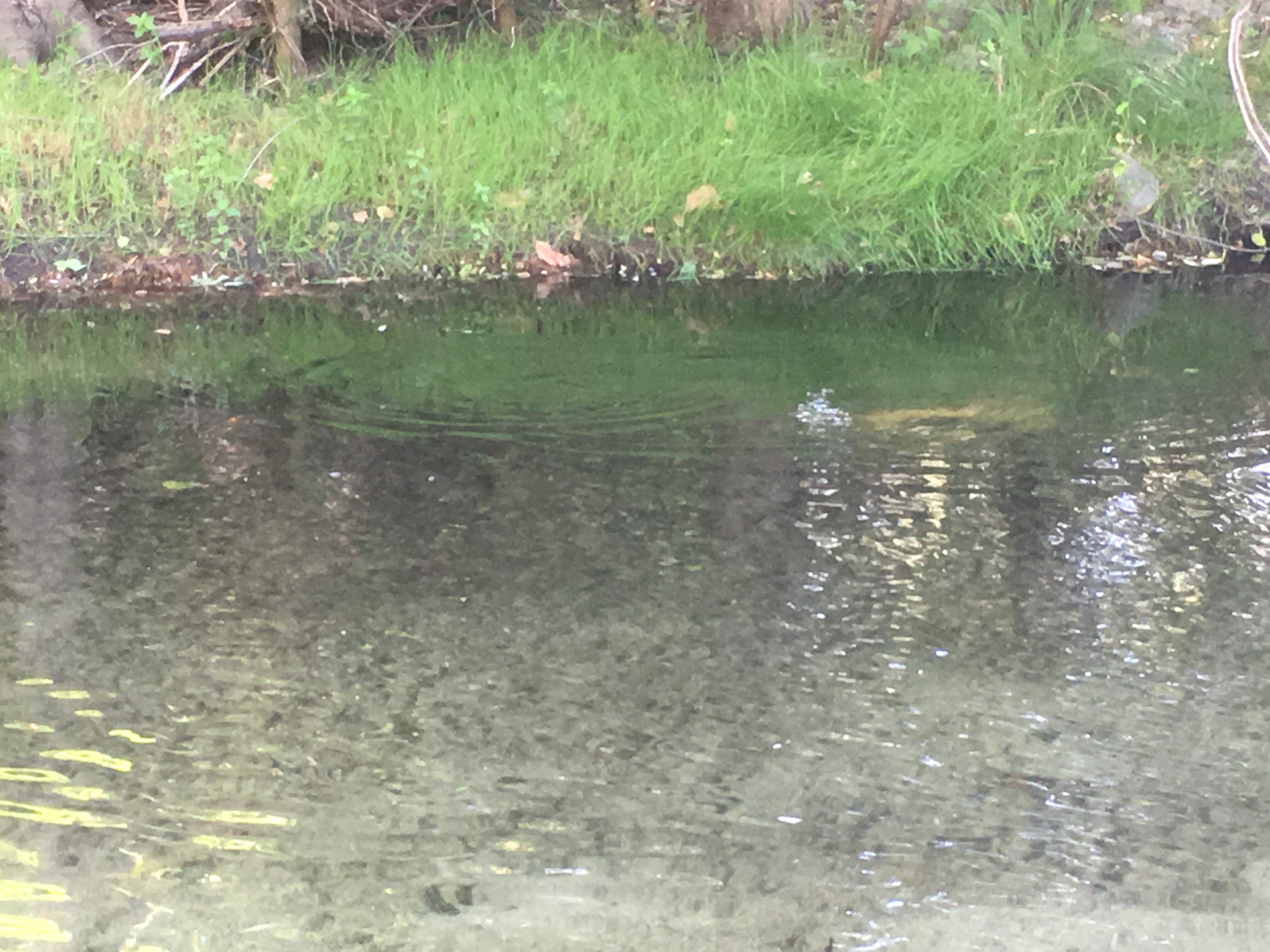Nature’s chiaroscuro. Carmel River, June 2018
By Sam Davidson
One of the required courses at the high school I attended was a class called Western Civilization. It was basically a survey course of ancient Greek and Roman art and
architecture, and Western European art, architecture, and music since the Renaissance.
In those days I was more interested in sports and outdoor activities like fishing than in any form of art other than rock music. While I can still identify a few of the more famous sculptures, paintings, temples and churches, not much else from that course stuck with me.
Except for one thing: a cool Italian word, chiaroscuro.
In art, chiaroscuro means the use of contrasts between light and dark to create a sense of volume in objects or figures. But a secondary meaning, per Merriam-Webster’s, is “the interplay of light and shadow on or as if on a surface.”
I think of this term sometimes when I am trout fishing in the Sierras, or watching trout in my home water, the Carmel River (you can’t fish for trout in the lower river, where I live, during the general season). For me, the interplay of light and shadow on streams is one of the most enjoyable things about fishing.

Mid-afternoon shadows, Carmel River, June 2018.
Clouds, cottonwoods, boulders, ospreys. Their shadows redefine the water and trout move accordingly. The effects of shadows on water can be so mesmerizing that sometimes I just stop fishing and watch.
Last year, this very month, I spent an afternoon on the Upper Owens River on the East Side of the Sierra. This section looks and acts like a spring creek, winding through sagebrush for miles with nary a tree in sight. As shreds from the cumulonimbus buildup over the Sierra Crest began scudding over the plateau, their shadows sailed over the water. Trout appeared in front of me where I had not seen them before, feeding higher in the water column. As the shadows passed on, the trout sank deeper and disappeared.
The mosquitoes, however, fed on undisturbed.
Some years back, on a trip to the upper Stanislaus River, I sat stood on the bank and watched a caddis hatch come off in the shafts of sunlight filtering through pines and Douglas firs onto the water. The bugs moved back and forth, staying in those shafts of light as the shadows repositioned themselves. Trout came aggressively to the surface to take the caddis. I cast upstream, into water in full shadow, drifting my fly through the zone—and got nothing. At length I began casting to drop the fly more precisely into the shafts of sunlight. I immediately got grabs.
Sometimes it’s the simple things, like gradients in light, that make the difference.
On my backyard stream, the Carmel, I’ll wander down to a little strip of fine-grained sand on the bank several times per day, just to watch the light filtering through maples and willows dance on the water.

Yes, that’s a rise. Carmel River, June 2018.
The active trout here (likely a mix of juvenile steelhead and resident rainbows) like to hang at the edges of the shadows. They move back and forth as the shadows sway in the breeze, occasionally rising to sip tiny midges off the surface.
Like Nick Adams, Hemingway’s famous protagonist, who feels a simple satisfaction while looking down on trout shifting positions below the railway span on Michigan’s Two Hearted River, it’s gratifying for me to watch the Carmel River trout darting and sidling in synch with the dappled light on the water.
That there are still trout here at all is something of a minor miracle — and testament to the efficacy of the remarkable life history diversity of O. mykiss.
The Carmel is a long-suffering steelhead stream, battered by a century of dams, excessive diversions, and droughts. The river remains the primary source of water for the tourist mecca of the Monterey Peninsula, and the water service provider for this area has struggled to bring new water sources online under an order from the State Water Board to reduce their diversions. At the same time, more wells have been drilled in the upper watershed to supply burgeoning wine grape production.
Even without these challenges, historically the climate here likely caused the river to go dry in some years in some of its reaches. Today, segments of the lower twelve miles of the river often get disconnected in the dry season.
Trout Unlimited has played a role in two major outcomes in recent years that are helping to restore the Carmel and its native steelhead population. As with so many coastal streams in this region, sustained efforts to restore habitat conditions and improve fish passage and dry season flows will become increasingly necessary to keep wild steelhead runs from winking out.
Meanwhile, I am a beneficiary of the efforts of TU and local groups such as the Carmel River Steelhead Association. I live next to a section of the river that stays wet year-round, and trout can reliably be found here. And as the shadows on the water change hour by hour, I watch them like some people watch Game of Thrones—binging, unable to tear myself away.



